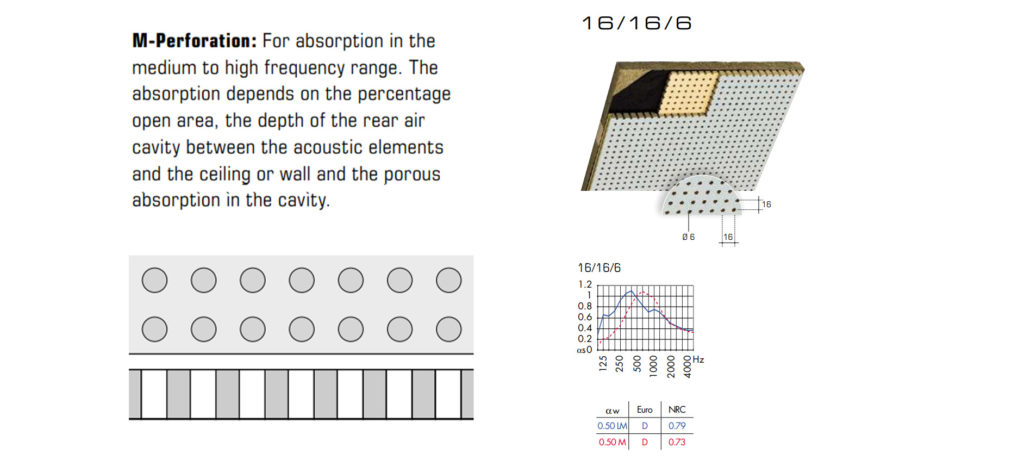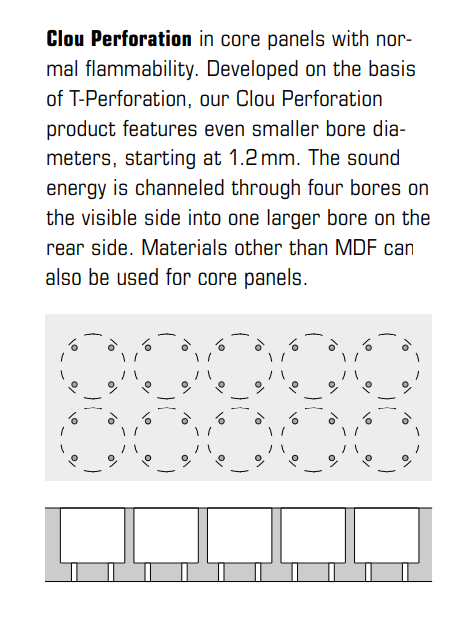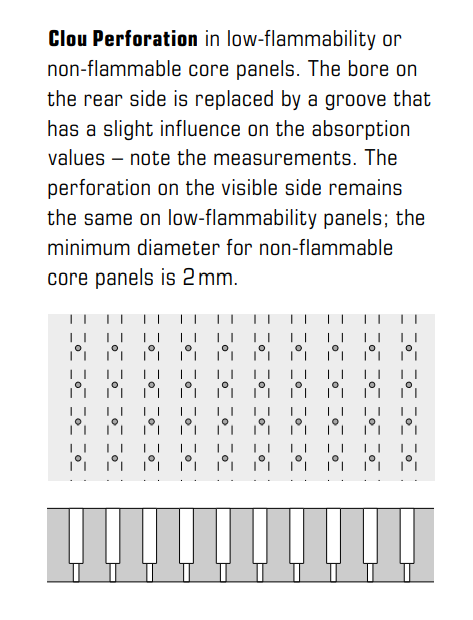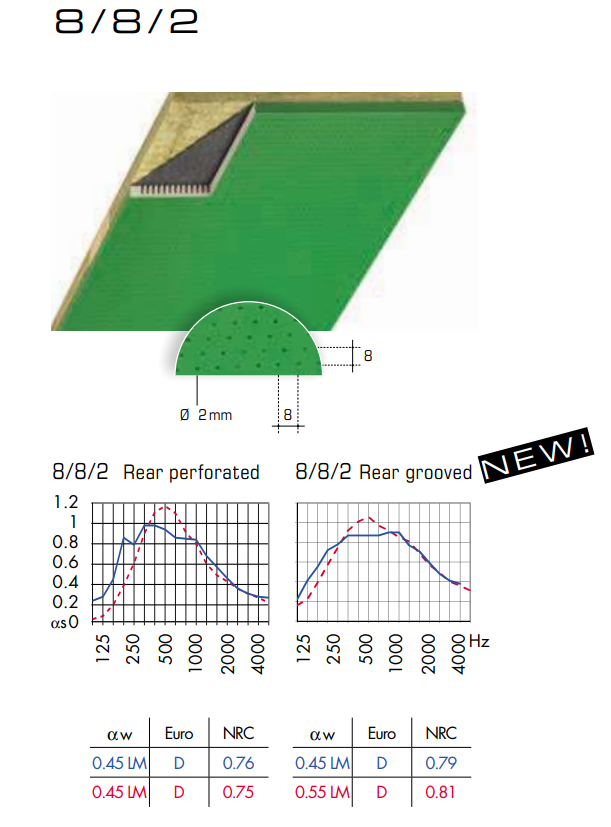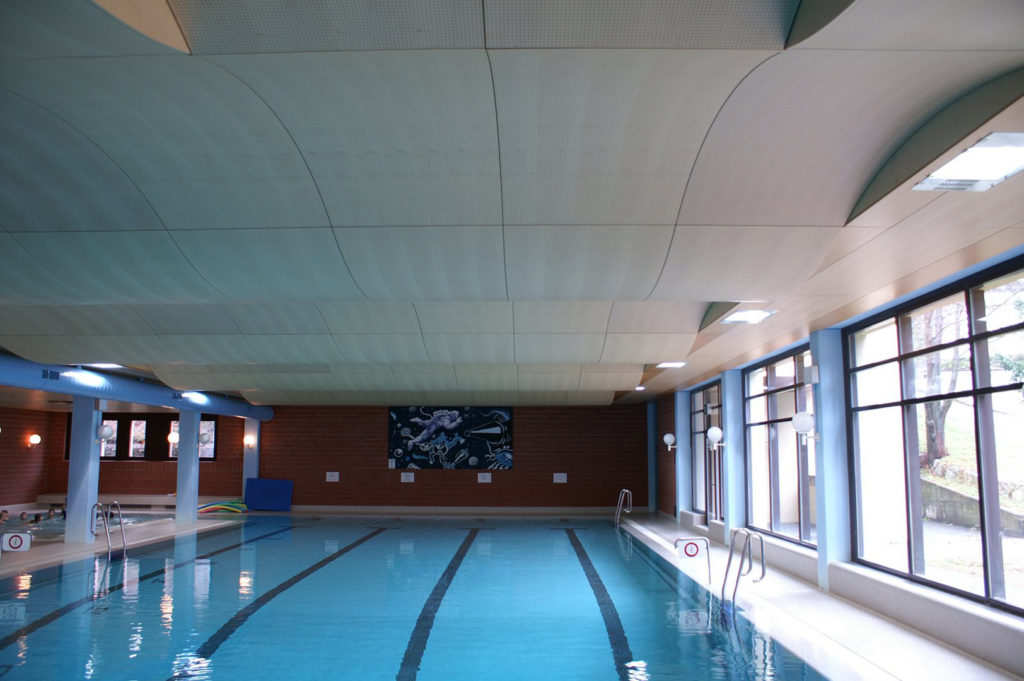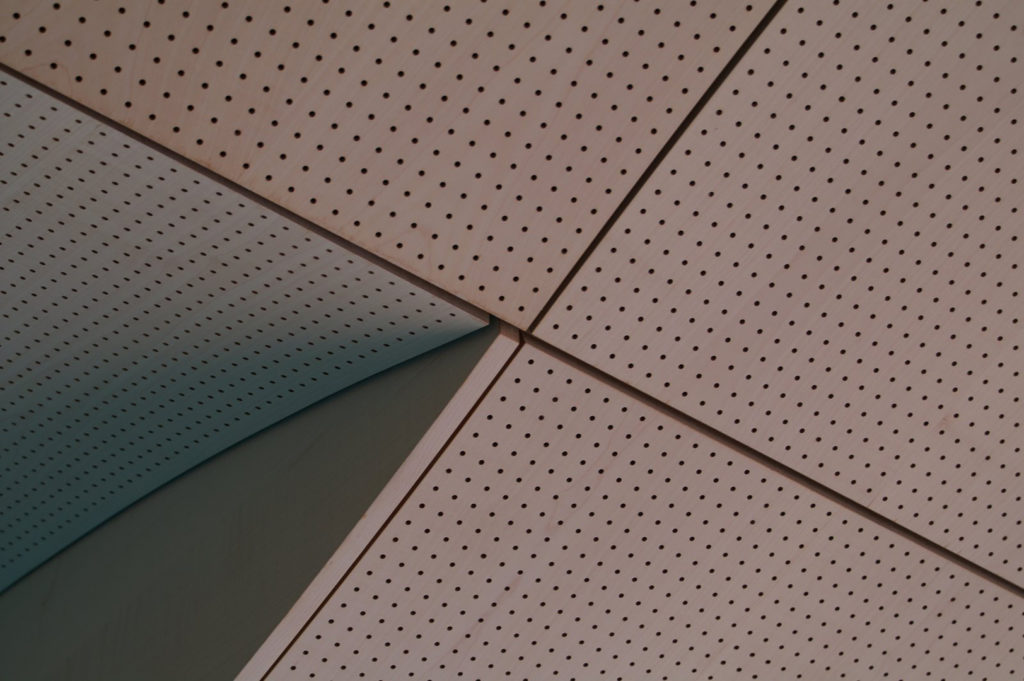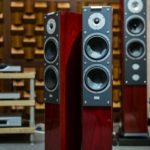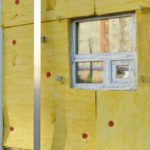25
Feb
2022
TOPAKUSTIK in Indoor Pools
Reading Time: 4 minutes
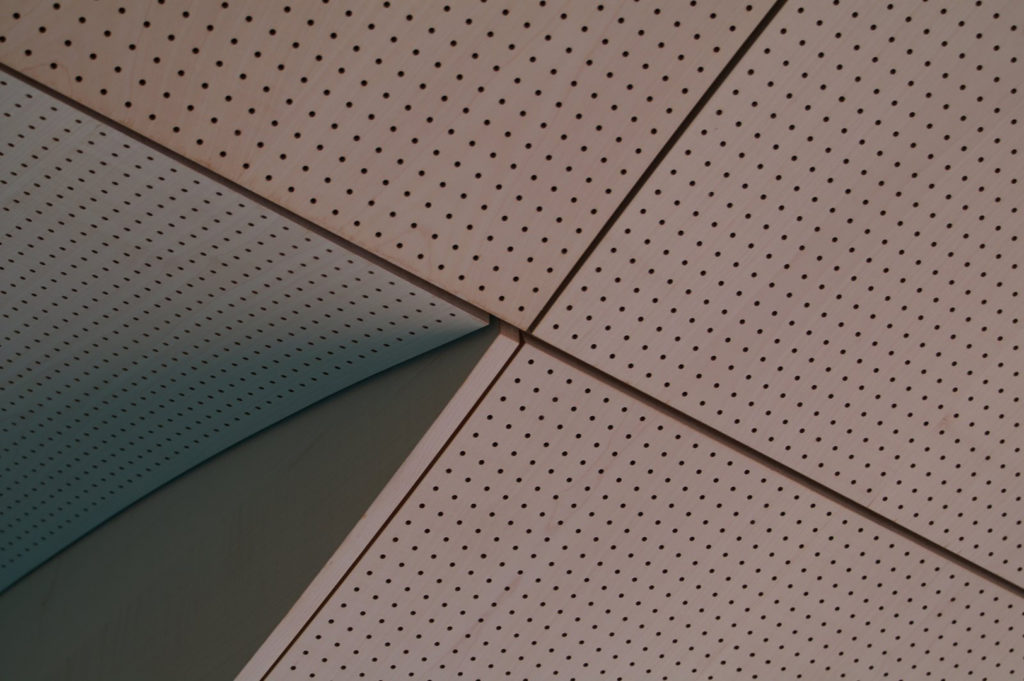
Acoustics in Indoor Pools
Architecture is not just a visual experience but a multi-sensorial experience. Sound is an essential part of the multi-sensorial experience of a space, but it is often neglected. An example of a space with often neglected acoustics is the indoor pool. Indoor pools typically have poor acoustics: the space has a lot of echoes, high levels of noise, and low speech intelligibility.
- The echoes are due to the large surfaces of concrete, glass, and ceramic tiles. These materials are preferred because of their water resistance, but they are hard and reflective, so sounds reflect easily. Additionally, indoor pools usually have high ceilings, which increases echo.
- Echoes contribute to high levels of noise. The pool is a place for leisure and activity, so noise is expected from people talking to each other, playing and splashing in the pool. This noise is amplified because of the reflected sound. Also, exposure to loud noise often triggers the Lombard effect: to be heard above the noise, people talk louder and louder, which further increases noise levels.
- Echoes also decrease speech intelligibility. The direct sound of a person’s speech is interfered with by its reflected sound. The direct sound is also muddled by the high levels of noise due to echoes.
These acoustic issues create an unpleasant and stressful environment for all.
Why use acoustic panels?
It is necessary to use acoustic panels like TOPAKUSTIK to improve room acoustics. These panels absorb sound, reduce sound reflections, which then reduces echo and background noise. Depending on the design, they can also target undesirable frequencies (e.g. low-frequency noise from machinery).
How acoustic panels absorb sound
Acoustic panels absorb sound in their grooves and perforations. When sound hits the panel, the air vibrates in the voids, and this kinetic energy transforms into heat, due to friction between air particles and walls. Thus sound energy dissipates instead of being reflected.
Challenges in Treating Indoor Pool Areas
Indoor pools have high humidity and high amounts of chlorine compounds in the air compared to a standard room climate. These conditions pose various challenges when using acoustic panels in indoor pools. However, there are ways to mitigate these issues.
Issues caused by humidity, and mitigations
High humidity poses a big challenge for 3 reasons:
- Moisture encourages mould growth on acoustic panels.
- Moisture causes the panel material to dilate.
- Humidity encourages metal parts to rust.
In general, to mitigate these issues, we need to minimise the panels’ exposure to moisture. In terms of application, acoustic panels are only used on ceilings, and not in splash-prone areas. An air conditioning system is also required to circulate air behind the ceiling and reduce condensation.
Additionally, the acoustic panels must use moisture-resistant materials. MDF can be used for the core board of the panels. Paint and lacquer can be used as the panels’ finish and should be applied to the rear side as well. Veneers can be used for the finish too, but only hardwoods (e.g. oak, maple, and beech bamboo). Softwoods (e.g. fir, anegre, and poplar) shouldn’t be used due to their poor mould resistance. The backing of the panels can be melamine foam or polyester fleece, as both are water-repellent. Standard mineral wool shouldn’t be used as it could become a breeding ground for mould.
The acoustic panel design must consider material dilation as well. Wood is hygroscopic, so it will expand in high humidity rooms.1 This is more pronounced for acoustic panels because the grooves and perforations increase surface area. Thus, the design should use slightly larger gaps and grooves. There should also be an 8-10mm gap between panels. However, this 8-10mm means that planks can’t be mounted seamlessly. There needs to be a large gap between the ceiling and the wall as well.
Condensation is especially high in areas that are less accessible and thus maintained less often (e.g. ceiling substructure).2 Hence, parts made of steel need to be sufficiently coated to prevent rusting due to the high humidity and condensation.3
Issues caused by chlorine compounds, and mitigations
Parts that are made of stainless steel can be corroded too, but by chlorine compounds instead of water. Chlorine compounds are present because they are typically added to pool water for sanitation purposes.4 These compounds can condensate on stainless steel parts, which may experience environmental stress corrosion cracking.5 Thus, construction should use stainless steel grades that have been proven to be corrosion resistant to chloride. These do not include the typical A2 stainless steel (a.k.a. AISI 304 stainless steel) or A4 stainless steel (a.k.a. AISI 316 stainless steel). Additionally, all metal profiles, screws and accessories in the ceiling substructure need to have a chloride resistant coating. There should be regular maintenance and corrosion inspections for this as well (conducted annually).
Summary:
| Challenges | High humidity | Exposure to chlorine compounds |
| Mitigations | Limit exposure to moisture 1. Apply to ceiling only 2. Air Conditioning system 3. Large gap between the wall and the ceiling Resistance to moisture and mould 1. Core board: MDF 2. Finish: Hardwood veneer 3. Finish: Paint and lacquer 4. Backing: polyester fleece Material dilation 1. 8-10mm gap between panels 2. Gap between ceiling and wall | Resistance to corrosion 1. Chloride resistant coating for all metal profiles, screws and accessories 2. Chloride resistant stainless steel 3. Have service traps |
TOPAKUSTIK
TOPAKUSTIK is an excellent range of acoustic timber cladding made by TOPAKUSTIK AG from Switzerland. They offer grooved types (TOPAKUSTIK) and drilled types (TOPPERFO) of acoustic panels. They have a large range of grooving, perforations, and finishes to fit various acoustic and aesthetic needs.
| Suitable for use in high humidity | |
| Grooved Types (TOPAKUSTIK) | TOPAKUSTIK (types with 3, 4mm grooves only) 29/3M 28/4M 18/3M 13/3M 12/4M |
| Drilled Types (TOPPERFO) | M-perforation (types with 6, 8mm holes only) 16/16/6 16/16/8 (10) 20/20/8 (16) T-perforation (types with 3, 4, 5mm holes only) 16/16/10 – 5 16/16/10 – 4 16/16/10 – 3 Type Clou (types with 2mm holes only) 8/8/2 |
| Core Board Materials | Moisture resistant MDF in B2/B1 grade, available for painted and veneered surfaces, but only in limited formats. |
| Finishes | Hardwood veneers (e.g. oak, maple, beech bamboo) Paint and lacquer |
| Formats | Panel, Plank |
Project examples
Here’s 3 examples of TOPAKUSTIK products used in indoor pool areas.
Infinity House
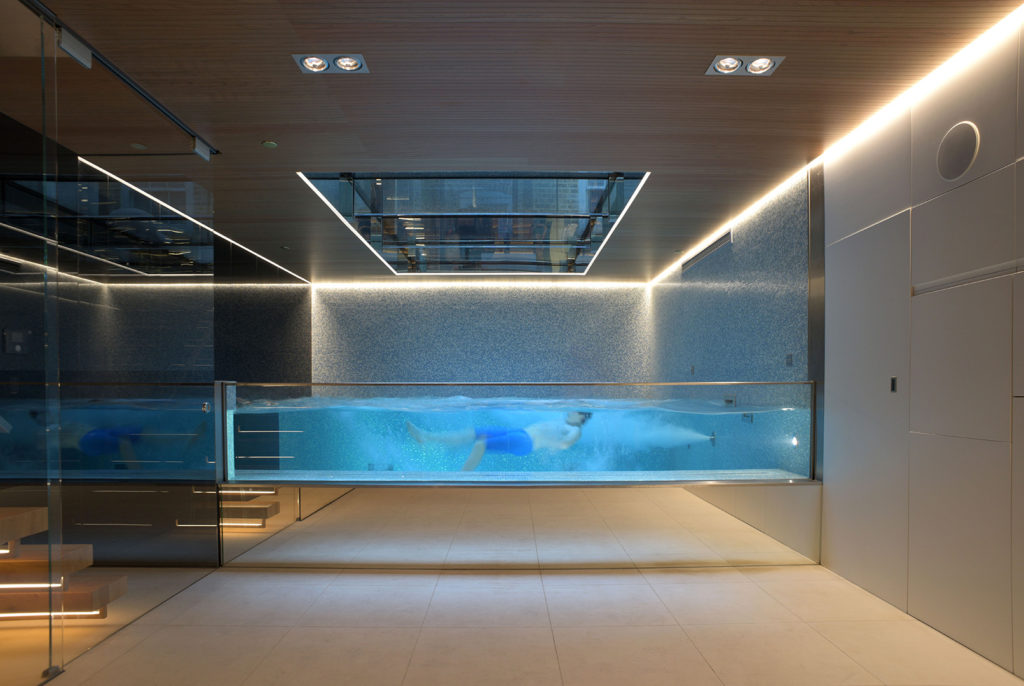
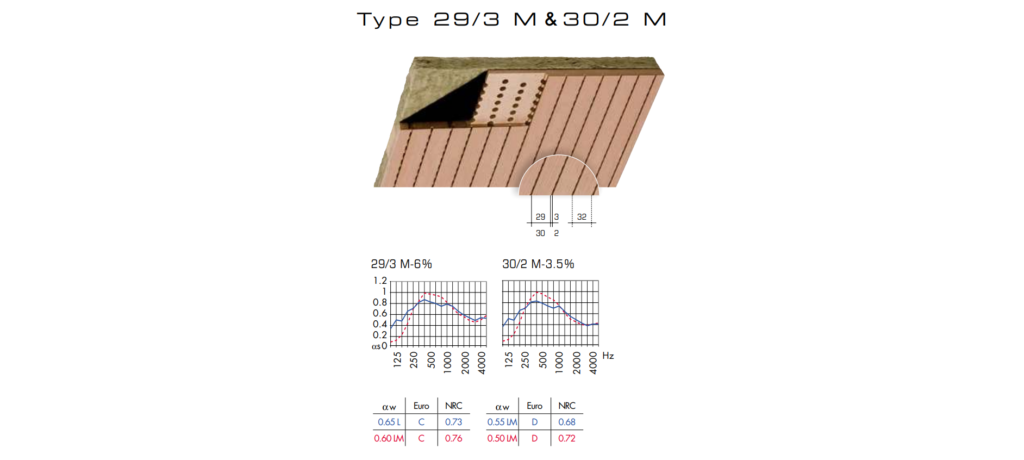
| Project | Infinity House Grade II Listed Georgian home6 |
| Location | London, UK |
| Groove / Perforation Type | TOPAKUSTIK, 29/3M Type 29/3M is an ideal solution for standard absorption requirements.7 |
| Core Board Material | MDF |
| Finish | Wood veneer (cherry), with natural lacquer Wood veneer uses a thin layer of carefully processed, genuine wood bonded to the core material underneath.8 |
| Format | Plank Planks are simple to assemble. They have a precise tongue and groove connection, such that the connecting joint matches the dimension of the grooves.9 |
Kaifu-Sole Bäderland
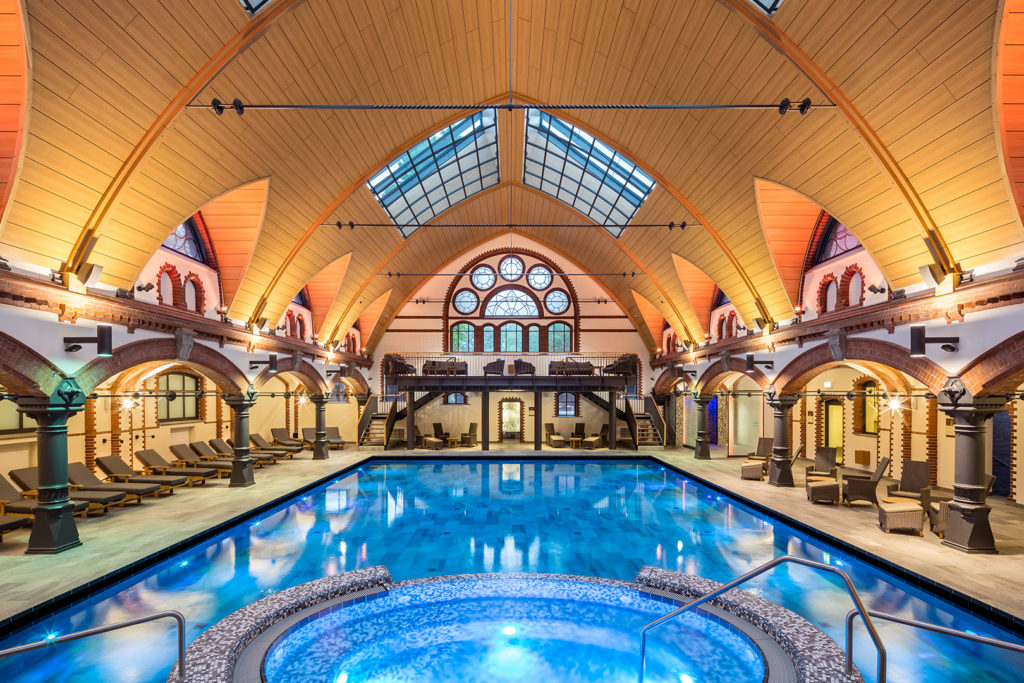
| Project | Kaifu-Sole Bäderland One of Hamburg’s most popular swimming pools10 |
| Location | Hamburg, Germany |
| Groove / Perforation Type | TOPPERFO, Type Clou, 8/8/2 Type Clou offers virtually invisible perforation, and is excellent in absorbing low-mid frequencies.11 |
| Core Board Material | MDF |
| Finish | Oak surface |
| Format | Panel Panels are simple to assemble and disassemble. It is ideal for structured ceiling and wall paneling, and various edge treatments are possible.12 |
Hotel Albrici
